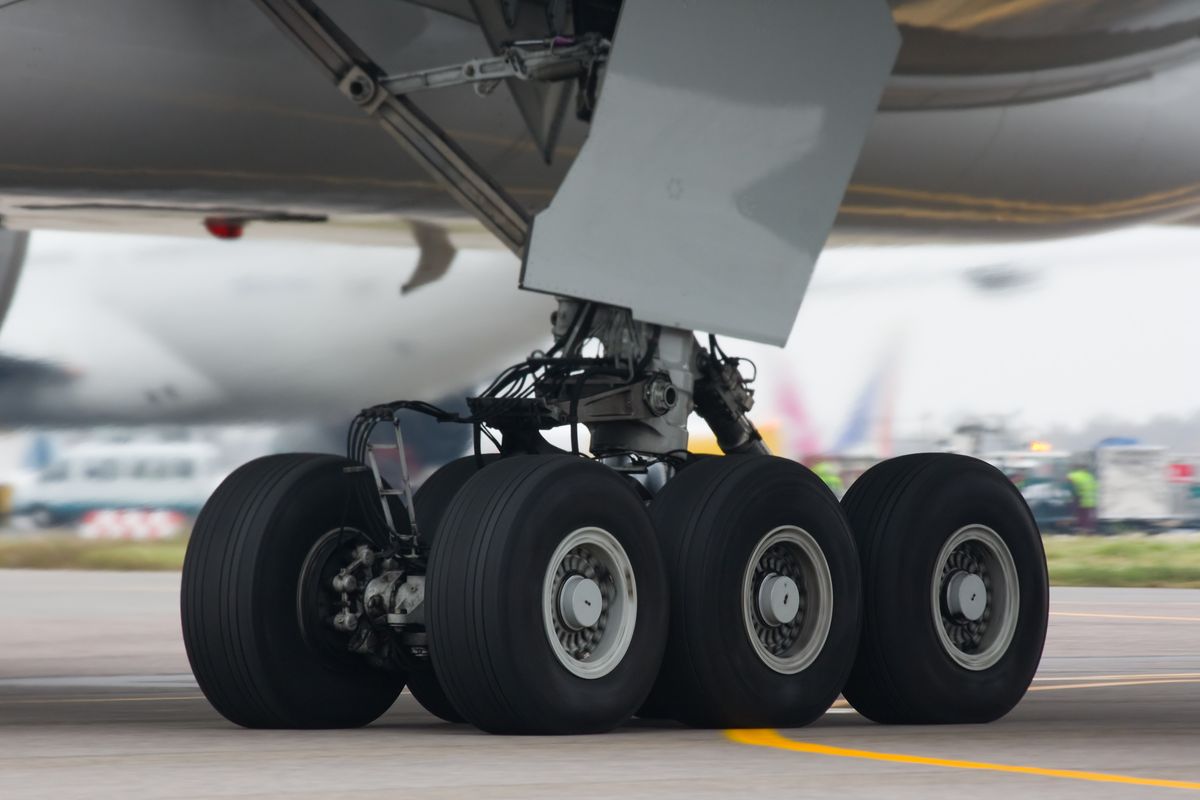Stowaway Might Have Survived International Flight in Wheel Well

A man or a body fell from the sky over a suburb of London on Sunday (Sept. 9) morning, and officials may never know whether he was dead before he hit the ground.
"I heard a monstrous bang. I thought someone had been hit by a car. There were two fellows going to church and they said there’s a dead body in the street," said Annie Williams, 47, a resident of the Mortlake neighborhood where the body was recovered, according to the Telegraph.
Mortlake is just 10 miles (16 kilometers) from Heathrow Airport and it lies directly under the flight path of planes approaching Heathrow's south runway. Investigators, who confirmed the body belonged to a man of African origin, believe the man tried to smuggle himself into England by stowing away in the landing-gear bay of a passenger plane that departed from North Africa.
The thinking is that when the landing-gear bay opened as the plane made its descent, the man tumbled out from a few thousand feet over Mortlake.
Not the first time
If this is indeed what happened, London will have seen two unsuccessful plane stowaway attempts in just over two weeks. On Aug. 23, the dead body of a suspected stowaway was found in the landing-gear bay of a British Airways flight that had landed at Heathrow after a flight from Cape Town, South Africa. This man is believed to have frozen to death during the flight.
So even if the most recent suspected stowaway had managed to remain in the plane until it landed, it's not clear he would have arrived alive, but was there a chance? Might he have been living at the moment he fell from the plane?
Sign up for the Live Science daily newsletter now
Get the world’s most fascinating discoveries delivered straight to your inbox.
The answer to both questions is yes. According to figures from the Federal Aviation Administration (FAA) Civil Aerospace Medical Institute, the chances of survival of a wheel-well stowaway on a commercial aircraft are about 24 percent.
As of Sept. 12, 2012, the FAA had recorded 96 such attempts since 1947, 23 of which left stowaways alive (failed attempts that ended with stowaways falling into bodies of water would likely not have been recorded). All but 14 of those attempts have been made since 1996, and within that modern pool, chances lower to about 21 percent.
Those are the numbers. But on an individual level, what does a person willing to lift himself into the wheel well of a pre-taxi aircraft actually face?
Stowaway survival
Based on a 1996 FAA report called "Survival at High Altitude: Wheel-Well Passengers" as well as data from subsequent stowaway attempts reported by the international air safety organization the Flight Safety Foundation (FSF), there seem to be four main threats that a landing-gear bay stowaway must contend with before arriving at his destination: being crushed by the landing gear during takeoff, hypoxia (a condition resulting from prolonged oxygen deprivation), hypothermia, and falling from the plane as the landing-gear bay opens during descent.
Any one of these threats might be lethal on its own, but what is peculiar for a stowaway facing all four is how each of these dangers interacts with the others and, very rarely, provides a loophole in the inevitability of another. For example, if a stowaway manages to avoid being crushed by the retraction of the tires as a plane takes off (successful attempts have been recorded in Boeing 747's, a model that British Airways operates), the frictional heat generated by the tires on the runway will provide a significant source of warmth in the compartment as the plane ascends into the cold air at high altitudes.
This heat, as well as other potential ambient heat provided by warm hydraulic lines, will not be enough to fend off hypothermia at 30,000 to 40,000 feet (9,144 to 12,192 meters), where air temperatures range between negative 49 Fahrenheit (negative 45 Celsius) and negative 85 F (negative 65 C). But before a stowaway can experience these temperatures, he will have almost certainly become unconscious due to hypoxia.
As a plane ascends to high altitudes, the proportion of oxygen in the air remains the same as on the ground. But decreases in atmospheric pressure, as well as in the component of the pressure contributed by oxygen (called its partial pressure), reduce available oxygen and stifle the body's ability to absorb what's there. According to the 1996 FAA report, "At all cruising jet altitudes, the [partial pressure of oxygen] is below that required to support brain consciousness."
Still, in 1996, an Indian man survived a roughly 4,200-mile (6,750 km) flight from New Delhi to London, which reached a peak altitude of 35,000 feet (10,668 m), in the plane's wheel well. He was discovered in a disoriented state at Heathrow. What went right for him?
The answer may involve the pairing of deep hypoxia with deep hypothermia.
As a person's body cedes control of its temperature to the outside environment, its oxygen requirement greatly decreases. According to the Flight Safety Foundation, in these conditions, as the body "curls into the fetal position to conserve heat, the heart rate may be as low as two beats per minute and breathing rate as low as once per 30 seconds."
When a plane begins its descent, whether or not a stowaway has roused from this state, the landing-gear bay will open.
Follow Life's Little Mysteries on Twitter @llmysteries. We're also on Facebook & Google+.












